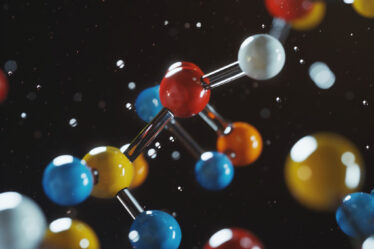
As you begin your journey into high school chemistry, you will encounter various concepts and principles that may initially seem overwhelming. One such concept is a mass fraction, which is crucial in understanding chemical reactions and the composition of multiple substances. This comprehensive guide is designed to help you master mass fractions, providing you with a clear understanding of its definition, units, calculations, real-life applications, and mass fraction examples.
Looking for a chemistry tutor? You can find it on meet’n’learn.
Introduction to the mass fraction in high school chemistry
To excel in your chemistry classes, it is essential to have a strong foundation in the basics. Mass fraction is one of those fundamental concepts that will help you in your chemistry lessons, future studies, and career in the scientific field. As you read on, you will learn about the mass fraction definition and concept, how to calculate mass fraction, mass fraction examples, and the importance of mass fraction in real-life applications.
By the end of this guide, you will have the knowledge and tools necessary to tackle mass fraction problems confidently. So, let’s dive in and start mastering this essential high school chemistry concept!
Understanding the mass fraction definition and concept
Before delving into the calculations and examples, it is crucial to understand what mass fraction is and why it is an essential concept in chemistry. Mass fraction, often represented by the symbol wi, is the ratio of the mass of a particular component in a mixture or solution to the total mass of that mixture or solution. In other words, the mass fraction is a measure of the concentration of a substance in a mixture, expressed as a proportion or percentage.
wi = mi / mtot
wi = mass fraction
mi = mass of the component
mtot = total mass of the mixture
The importance of learning mass fraction
This concept is handy when analyzing the composition of various substances, such as alloys, solutions, and mixtures. By determining the mass fractions of the individual components, chemists can gain valuable insights into the properties and behavior of these substances, allowing them to manipulate and control chemical reactions more effectively.
Real-life applications of mass fraction
In addition to its applications in the laboratory, the mass fraction is also relevant in many industries, such as food processing, pharmaceuticals, and environmental science. For example, a mass fraction can be used to determine the concentration of a particular nutrient in food or to analyze the levels of pollutants in air or water samples. Thus, understanding the mass fraction is essential for your chemistry classes and a wide range of real-life applications.
Mass fraction units and measurement
Mass fraction is a dimensionless quantity, meaning it has no specific unit of measurement. Instead, the mass fraction is typically expressed as a proportion, percentage, or parts per million (ppm). It is crucial to be familiar with the units and measurements commonly used in this context when dealing with mass fractions.
To convert a mass fraction value to a percentage, multiply it by 100. For example, if the mass fraction of a component in a mixture is 0.25, its mass percentage would be 25% (0.25 x 100). To convert a mass fraction value to parts per million, multiply it by 1,000,000. For example, a mass fraction of 0.000003 would equal 3 ppm (0.000003 x 1,000,000).
Don’t forget!
When measuring mass fractions, it is essential to ensure that all components of the mixture or solution are calculated using the same unit of mass, such as grams or kilograms. This will ensure that the mass fraction values are consistent and accurate, allowing for more reliable calculations and comparisons.
How to calculate mass fraction: step-by-step guide
Now that you understand the definition, concept, and the units and measurements involved, it is time to learn how to calculate mass fractions. The process involves several steps, which are outlined below:
- Identify the components of the mixture or solution: Before calculating the mass fraction of a particular element, you must first determine the substances present in the mixture or solution.
- Measure the mass of each component: Using a balance or scale, measure the mass of each component in the mixture or solution. Be sure to use the same unit of mass for all measurements to ensure consistency.
- Calculate the total mass of the mixture or solution: Add the masses of all components to determine the total mass of the mixture or solution.
- Calculate the mass fraction of each component: Divide the mass of each component by the total mass of the mixture or solution to obtain the mass fraction for that component. Remember that mass fraction is a dimensionless quantity, so your answer will be a numerical value without specific units.
- Convert the mass fraction to a percentage or parts per million, if desired: To express the mass fraction as a percentage, multiply the mass fraction value by 100. To express the mass fraction as parts per million, multiply the mass fraction value by 1,000,000.
By following these steps, you can calculate the mass fraction of any component in a mixture or solution, allowing you to analyze the composition of various substances and better understand their properties and behavior.
Mass fraction example problems and solutions
To help you further understand how to calculate the mass fraction, let’s look at some example problems and their solutions.
Mass fraction Example 1
A solution contains 10 grams of salt (NaCl) and 90 grams of water (H2O). What is the mass fraction of NaCl in the solution?
- 1. Identify the components of the mixture: NaCl and H2O.
- 2. Measure the mass of each component: 10 grams of NaCl and 90 grams of H2O.
- 3. Calculate the total mass of the mixture: 10 grams (NaCl) + 90 grams (H2O) = 100 grams.
- 4. Calculate the mass fraction of NaCl: 10 grams (NaCl) / 100 grams (total mass) = 0.1.
- 5. Convert the mass fraction to a percentage: 0.1 x 100 = 10%.
Solution: The mass fraction of NaCl in the solution is 0.1 or 10%.
Mass fraction Example 2
An alloy contains 300 grams of copper (Cu) and 700 grams of zinc (Zn). What is the mass fraction of Cu and Zn in the alloy?
- 1. Identify the mixture’s components: Cu and Zn.
- 2. Measure the mass of each component: 300 grams of Cu and 700 grams of Zn.
- 3. Calculate the total mass of the mixture: 300 grams (Cu) + 700 grams (Zn) = 1000 grams.
- 4. Calculate the mass fraction of Cu: 300 grams (Cu) / 1000 grams (total mass) = 0.3.
- 5. Calculate the mass fraction of Zn: 700 grams (Zn) / 1000 grams (total mass) = 0.7.
Solution: The mass fraction of Cu in the alloy is 0.3, and the mass fraction of Zn is 0.7.
These examples demonstrate how to calculate mass fractions for various substances, providing you with the skills necessary to tackle a wide range of mass fraction problems in your chemistry classes and beyond.
The importance of mass fraction in real-life applications
As mentioned earlier, the mass fraction is crucial in various real-life applications, ranging from food processing to environmental science. By determining the mass fractions of multiple components in a mixture or solution, scientists and engineers can gain valuable insights into the properties and behavior of these substances, allowing them to develop new products, optimize processes, and address critical issues.
In the food industry, for example, the mass fraction is used to analyze the composition of various products, ensuring that they meet specific nutritional requirements and quality standards. Similarly, the mass fraction is employed in the pharmaceutical industry to determine the concentration of active ingredients in medications, ensuring their safety and efficacy.
In environmental science, a mass fraction is used to analyze air, water, and soil samples, helping to identify and quantify the presence of pollutants and other contaminants. This information is crucial for developing effective strategies to address environmental challenges and protect public health.
Tips for mastering mass fraction concepts
To become an expert in mass fraction, consider the following tips:
- Practice, practice, practice: The more you practice calculating mass fractions, the more comfortable and confident you will become with the concept. Use examples, solutions, and practice problems from your chemistry textbook or online resources.
- Understand the underlying concepts: Make sure you have a solid understanding of the mass fraction definition, units, and measurements, as well as the steps involved in calculating mass fractions. This will help you quickly tackle a wide range of mass fraction problems.
- Seek help when needed: If you struggle with mass fraction concepts, don’t hesitate to ask your teacher, classmates, or tutor for assistance. They can help clarify any confusion and provide additional guidance or resources to help you master the material.
- Apply mass fraction to real-life situations: To truly appreciate the importance and relevance of mass fraction, consider how it is used in various industries and applications, as discussed earlier in this guide. This will help you connect the concept to the world around you and deepen your understanding of its significance.
Finding the right tutor or tutoring resources for chemistry classes
If you need help with mass fractions or other high school chemistry concepts, consider seeking the help of a tutor or exploring additional tutoring resources. A tutor can provide personalized instruction and guidance, helping you overcome challenges and excel in your chemistry classes.
There are several options available when it comes to finding a tutor or tutoring resources, such as:
- In-person tutors: Many schools and community centers offer in-person tutoring services, where you can meet with a tutor face-to-face to discuss your chemistry questions and concerns.
- Online tutoring platforms: Numerous online tutoring platforms, such as meet’n’learn connect students with qualified tutors via video chat or messaging for one-on-one or group sessions.
- Private teachers: If you prefer a more personalized approach, consider hiring a private teacher who can work with you regularly to help you master the mass fraction and other high school chemistry concepts.
- Tutoring resources: Besides working with a tutor, consider exploring various tutoring resources, such as chemistry textbooks, online tutorials, and practice problem sets, to help you reinforce your understanding of the mass fraction and other concepts.
If you need a chemistry tutor, search for “chemistry tutor Glasgow” or “chemistry teacher Sheffield” on tutoring platforms for individualized help.
If group study suits you better, search “chemistry classes London” or “chemistry lessons Manchester” online to find local schools offering chemistry classes. Dive into the fascinating world of chemistry now!
Online lessons for learning chemistry
In today’s digital age, numerous online lessons and personal teacher options are available to help you master mass fractions and other high school chemistry concepts. These options offer flexibility, convenience, and personalized instruction, making them an excellent choice for many students.
Some popular online lesson platforms include:
Conclusion: Becoming a mass fraction expert
Mastering mass fraction is essential to your high school chemistry education, as it plays a crucial role in understanding chemical reactions, the composition of substances, and various real-life applications. By following this comprehensive guide, you will understand the mass fraction definition, units, calculations, and the importance of mass fraction in a wide range of industries and fields.
To become a mass fraction expert, practice calculating mass fractions regularly, seek help when needed, and explore additional tutoring resources and options. With dedication, perseverance, and proper support, you can master the mass fraction and excel in your high school chemistry classes and beyond.
Looking for a chemistry tutor? You can find it on meet’n’learn.


